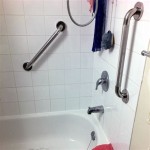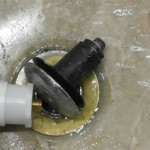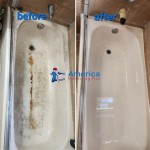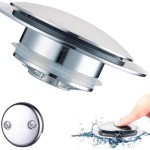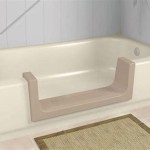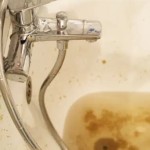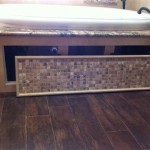Here's an article on how to caulk around a bathtub faucet:
How To Caulk Around a Bathtub Faucet
Caulking around a bathtub faucet is a critical maintenance task for any homeowner. Properly applied caulk prevents water from seeping behind the faucet escutcheon and into the wall cavity. This intrusion can lead to mold growth, wood rot, and potentially expensive structural damage. This article provides a comprehensive guide to effectively caulking around a bathtub faucet, ensuring a watertight seal and protecting the surrounding structure.
Before commencing the caulking process, it is essential to gather the necessary materials and tools. This preparation will streamline the operation and ensure a professional-looking result. The required items include: new caulk (silicone or acrylic latex caulk with mildew resistance is recommended), a caulk gun, a caulk remover tool (if removing old caulk), a utility knife, denatured alcohol or mineral spirits, clean rags or paper towels, painter's tape, and a smoothing tool (optional, but helpful for achieving a consistent bead).
Safety is paramount when undertaking any home improvement project. Wearing appropriate personal protective equipment, such as safety glasses and gloves, is recommended to protect the eyes and skin from irritants and debris. Ensure the work area is well-ventilated to avoid inhaling caulk fumes. If using a caulk remover with solvents, follow the manufacturer's safety instructions carefully.
Removing Old Caulk
The first step in re-caulking around a bathtub faucet is the meticulous removal of the existing caulk. Old caulk can become cracked, brittle, and harbor mildew, compromising its ability to seal the area effectively. Attempting to caulk over existing caulk is not recommended as the new caulk will not adhere properly, leading to a compromised seal and the potential for water damage.
Begin by using a caulk remover tool or a utility knife to carefully score along the edges of the old caulk bead. The caulk remover tool is designed to slide under the caulk and lift it away from the surface, minimizing damage to the surrounding tile or fixture. If using a utility knife, exercise extreme caution to avoid scratching the surfaces. A dull blade can be more dangerous than a sharp one, as it requires more force to cut, increasing the risk of slippage.
Once the edges of the caulk have been scored, use the caulk remover tool or a pair of pliers to gently pull the old caulk away from the faucet escutcheon and the surrounding surface. If the caulk is particularly stubborn, a heat gun (used carefully on a low setting) can soften the caulk, making it easier to remove. However, extreme caution must be exercised when using a heat gun near plumbing fixtures and walls to avoid damage. Avoid overheating any one area and keep the heat gun moving.
After the bulk of the caulk has been removed, there will likely be residual caulk clinging to the surfaces. Use a plastic scraper or a stiff-bristled brush to remove these remnants. Avoid using metal scrapers, as they can scratch the surfaces. To remove any remaining residue, dampen a clean rag with denatured alcohol or mineral spirits and thoroughly wipe the area. This will also help to clean the surfaces and prepare them for the new caulk.
Inspect the area carefully after removing the old caulk. Look for any signs of mold, mildew, or water damage. If mold or mildew is present, clean the area thoroughly with a mold and mildew remover before proceeding. Allow the area to dry completely before applying the new caulk. It is important to address any underlying moisture issues before re-caulking to prevent the problem from recurring.
Preparing the Area for Caulking
Proper preparation of the area to be caulked is crucial for ensuring a strong and long-lasting seal. This includes cleaning the surfaces, ensuring they are dry, and applying painter's tape to create clean, professional-looking caulk lines.
After removing the old caulk and cleaning the surfaces with denatured alcohol or mineral spirits, allow the area to dry completely. Any moisture present will prevent the caulk from adhering properly, leading to premature failure. A hair dryer can be used on a low setting to expedite the drying process, but be careful not to overheat the surfaces.
Once the area is dry, apply painter's tape along the edges of the faucet escutcheon and the surrounding surface, creating a border for the caulk. The painter's tape will help to create clean, straight caulk lines and prevent the caulk from smearing onto adjacent surfaces. Ensure the tape is applied evenly and securely, with no gaps or wrinkles. Overlap the tape slightly at the corners of the faucet escutcheon to create a seamless seal.
The width of the gap between the tape lines should be consistent with the desired width of the caulk bead. For most bathtub faucet installations, a caulk bead that is approximately 1/8 to 1/4 inch wide is sufficient. Adjust the tape lines accordingly to achieve the desired width.
Inspect the area again before applying the caulk to ensure that it is clean, dry, and properly taped. Any imperfections in the preparation will be reflected in the final result. Taking the time to prepare the area properly will ensure a professional-looking and long-lasting seal.
Applying the Caulk
The application of the caulk requires a steady hand and attention to detail. Consistency in the application technique is key to achieving a smooth, even bead that effectively seals the area around the bathtub faucet.
Before inserting the caulk tube into the caulk gun, snip the tip of the tube at a 45-degree angle using a utility knife. The size of the opening should be slightly smaller than the desired width of the caulk bead. Start with a smaller opening and gradually increase it as needed. Puncture the seal inside the tube using a long nail or wire.
Load the caulk tube into the caulk gun. Practice applying caulk on a piece of cardboard or scrap material before applying it to the bathtub faucet. This will allow to get a feel for the caulk gun and adjust the pressure applied to the trigger. The objective is to achieve a smooth, even flow of caulk without any air bubbles or gaps.
Position the caulk gun at a 45-degree angle to the surface and begin applying the caulk along the gap between the faucet escutcheon and the surrounding surface. Maintain a consistent pressure on the trigger and move the caulk gun slowly and steadily along the seam. Overlap the start and end points slightly to ensure a continuous seal.
Avoid applying too much caulk at once. It is better to apply a thin bead and then smooth it out than to apply a thick bead that is difficult to manage. If necessary, apply a second thin bead to fill any gaps or imperfections.
After applying the caulk, immediately smooth it out using a caulk smoothing tool or a wet finger. A caulk smoothing tool is a small, plastic tool with a rounded edge that is designed to create a smooth, concave bead. If using a finger, dip it in water or mineral spirits to prevent the caulk from sticking.
Run the smoothing tool or finger along the caulk bead in a smooth, continuous motion. Remove any excess caulk with a clean rag or paper towel. If necessary, re-apply the smoothing tool or finger to achieve a perfectly smooth bead.
Immediately after smoothing the caulk, carefully remove the painter's tape. Pull the tape away from the caulk at a 45-degree angle to avoid pulling the caulk away from the surface. If any caulk is pulled away, re-smooth the area with a finger or smoothing tool.
Inspect the finished caulk bead carefully. Look for any gaps, imperfections, or areas where the caulk is not adhering properly. If necessary, apply additional caulk to fill any gaps and smooth it out. Allow the caulk to cure completely according to the manufacturer's instructions before using the bathtub or shower. This typically takes 24 to 48 hours.

How To Apply Caulk Around A Tub Spout Bathroomaccessories Plumbingissues Howto Diy

How To Caulk A Bathtub 13 Steps With Pictures Wikihow
:max_bytes(150000):strip_icc()/wipe_dap-56a73ba03df78cf77293815a.jpg?strip=all)
How To Caulk Shower And Bathtub Trim

Great Way To Caulk Tub Valve Handle And Cover

How To Caulk A Bathtub 13 Steps With Pictures Wikihow

How To Replace Caulk Around Faucet Tiktok

How To Seal Tub Spout And Valve Trim With Silicone Caulking The Fixer Clips

How To Caulk A Shower Or Bathtub Diy Family Handyman

Stop Water Damage Re Caulk Your Tub Today 1 Tom Plumber

How To Caulk Tub

